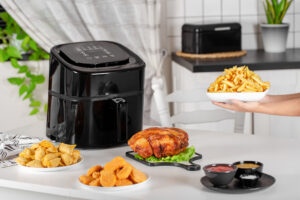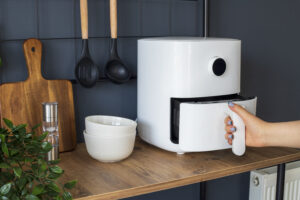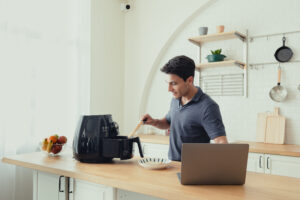5 types of food that are best avoided in your air fryer
Exploring the Limits: What Cannot Be Cooked in an Air Fryer
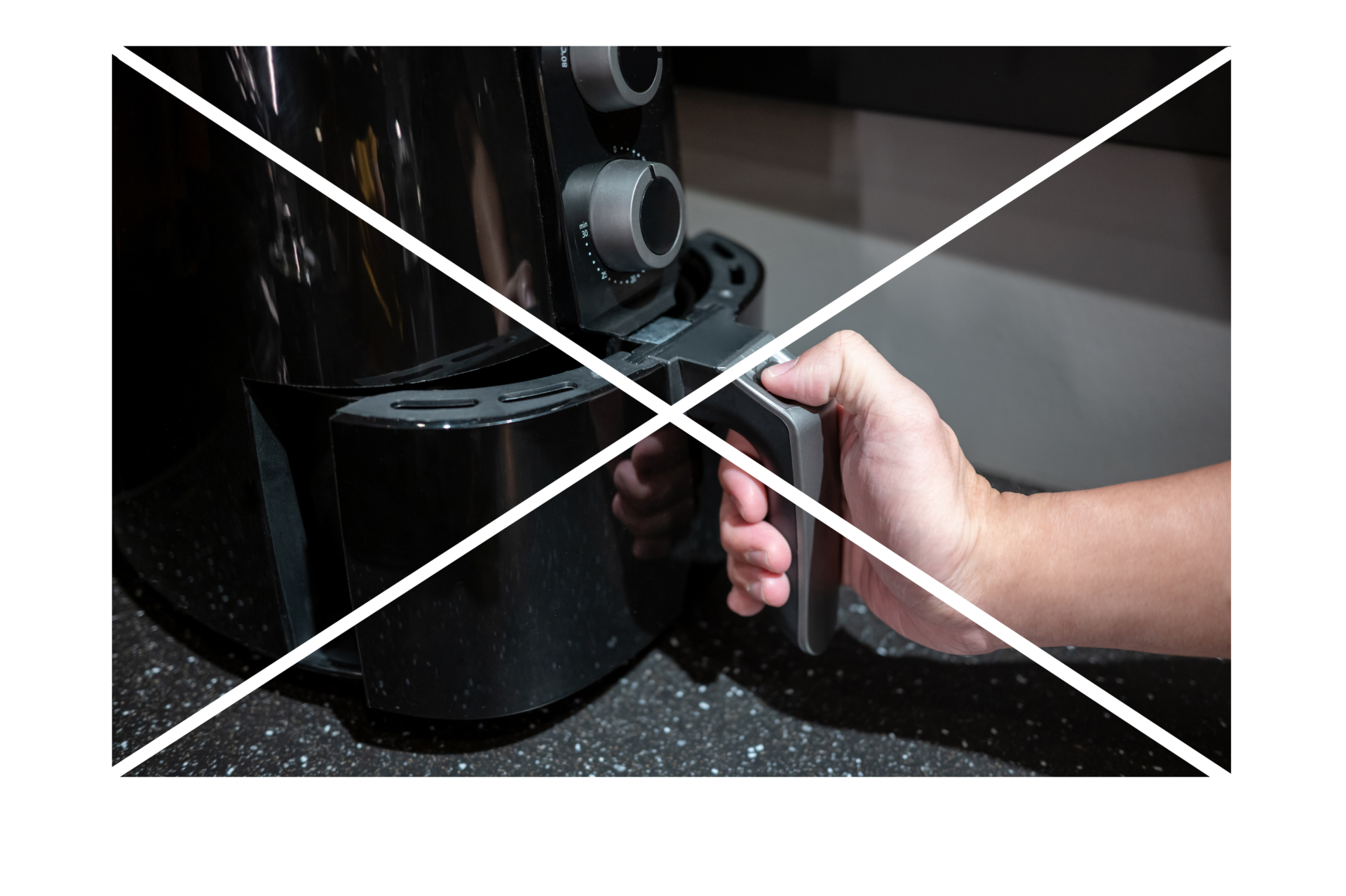
In the past few years, the air fryer has become increasingly popular as a versatile kitchen gadget, offering the allure of healthier, crispy, and tasty meals using minimal oil. Whether it’s achieving crispy fries or succulent chicken wings, the air fryer appears to have the ability to turn numerous dishes into guilt-free indulgences. Nonetheless, despite its remarkable performance, there are specific foods that are not well-suited for cooking in an air fryer. Let’s explore which foods are best avoided in an air fryer and the reasons behind this.
Large Cuts of Meat
When it comes to cooking in an air fryer, size matters. Smaller cuts of meat, like chicken wings or fish fillets, are a breeze – they come out crispy and delicious every time. But when you start talking about larger cuts, like Tomahawk stake or roasts, that’s when things can get a little tricky. You see, cooking big pieces of meat in an fryer requires precise temperature control and longer cooking times, which the appliance might struggle with. And let’s be real, nobody wants to bite into a steak that’s cooked unevenly. That’s why, for these larger cuts, it’s best to stick to the tried-and-true methods like grilling, roasting in the oven, or pan-searing. That way, you can ensure that your meat comes out juicy, tender, and perfectly cooked every single time.

Delicate Foods
When it comes to delicate culinary creations, like soufflés, custards, or delicate pastries, the air fryer might not be your best bet. Why? Well, it all comes down to the intense heat and rapid air circulation that’s characteristic of air fryers. These gentle items require a more tender touch when it comes to cooking, something that the air fryer’s powerful fan and high temperatures may not provide. Picture a delicate soufflé collapsing under the forceful air currents or a custard turning into a rubbery mess from overcooking – not exactly what you’re aiming for, right?
For these finicky foods, it’s better to stick to good old-fashioned baking techniques. Baking allows for more precise temperature control and gentler cooking, ensuring that your delicate creations come out perfectly every time. So, if you’re craving a fluffy soufflé or a creamy custard, leave the fryer in the cupboard and reach for your trusty oven instead. Your taste buds will thank you for it!

Wet Batters and Liquid-Based Dishes
When it comes to wet batters and dishes with high liquid content, such as certain batters for fried foods or saucy dishes like stews and curries, the air fryer can pose some challenges. The intense heat and rapid air circulation of the fryer may not always be conducive to achieving the desired results with these types of foods.
First off, let’s talk about wet batters. Traditional deep-frying relies on the batter forming a protective barrier around the food as it fries, sealing in moisture and creating that crispy exterior we all love. However, in an fryer, the batter may not have enough time to set before the rapid air circulation starts cooking it. This can result in a soggy, unappetizing coating or, worse, the batter dripping off entirely and making a mess in the fryer basket.
Similarly, liquid-based dishes like stews, soups, and curries may not fare well in an fryer. While these dishes benefit from slow, gentle cooking to allow flavors to meld and develop, the high heat and quick cooking time of the fryer can lead to uneven cooking and potentially dried-out or overcooked ingredients. Plus, the limited space in the fryer basket may not accommodate larger quantities of liquid-based dishes, making it impractical for preparing meals in larger batches.
In summary, while the fryer excels at certain types of cooking, wet batters and liquid-based dishes may not be its strong suit. For these types of foods, it’s often best to stick to traditional cooking methods like deep-frying for wet batters and stovetop simmering or slow cooking for liquid-based dishes. This ensures that you’ll achieve the best results in terms of flavor, texture, and overall deliciousness.
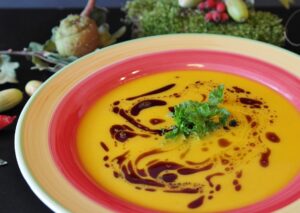
Foods Requiring Moisture
Air fryers have become increasingly popular due to their ability to cook a wide variety of foods with less oil and in a fraction of the time compared to traditional methods. These kitchen appliances work by circulating hot air rapidly around the food, creating a crispy outer layer while retaining moisture inside. However, this cooking process can pose challenges for certain types of food, particularly those that rely heavily on moisture for proper cooking.
Foods such as rice or pasta, which require moisture to cook properly, may not achieve the desired results when cooked in a fryer. The circulating hot air can lead to moisture loss during the cooking process, potentially resulting in dry, tough, or unevenly cooked food.
Pasta, for example, needs to absorb water to become tender and cooked throughout. When cooked in a fryer, there’s a risk that the pasta may not have enough moisture to cook properly, leading to a chewy or undercooked texture. Additionally, the lack of moisture can cause the pasta to become dry and stick together, further detracting from the overall quality of the dish.
Similarly, rice requires a precise balance of water and heat to cook evenly and become fluffy. Cooking rice in a fryer may result in uneven cooking and a lack of moisture, leading to grains that are either undercooked or overly dry.
While some recipes may be adapted to work well with the air fryer’s cooking method, such as pre-cooked pasta dishes like macaroni and cheese, it’s essential to be mindful of the potential challenges when cooking foods that require moisture. Experimentation and adjustments to cooking times and methods may be necessary to achieve satisfactory results when cooking these types of food in a fryer.
In summary, while fryers are incredibly versatile appliances, certain foods that rely on moisture for proper cooking, such as rice or pasta, may not cook well in them and could end up dry or unevenly cooked. Understanding the limitations of the fryer and choosing appropriate cooking methods for different types of food can help ensure delicious and satisfying results.
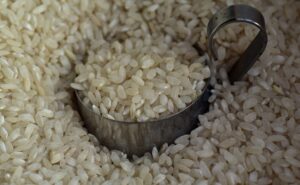
Foods Wrapped in Foil
While utilizing an air fryer can be a convenient and efficient way to cook a variety of dishes, it’s essential to be mindful of certain cooking techniques to ensure optimal results. One common mistake that can impact the outcome of your culinary creations is wrapping food in foil before placing it in the air fryer.
When food is wrapped in foil, it creates a barrier that obstructs air circulation within the fryer basket. Proper air circulation is crucial for achieving even cooking and crispiness, hallmarks of air-fried dishes. However, when foil inhibits this airflow, it can lead to unevenly cooked food or even damage to the appliance.
Therefore, it’s advisable to refrain from cooking foods directly wrapped in foil in the fryer basket. Doing so may compromise the cooking process and result in disappointing outcomes. Instead, opt for methods that allow for adequate air circulation, such as placing food directly on the fryer basket or using accessories specifically designed for air frying.
By avoiding the use of foil in the fryer, you can ensure that your dishes cook evenly and achieve the desired texture without compromising the performance of your appliance. Embracing proper cooking techniques will help you make the most out of your fryer experience and delight your taste buds with delicious, perfectly cooked meals time and time again.
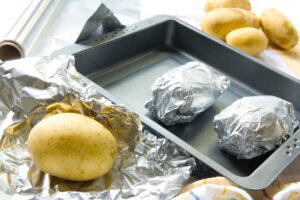
While air fryers excel at crisping foods with minimal oil, they have limitations. Experimenting with recipes helps discover their strengths and weaknesses. Understanding your air fryer’s nuances—like size and settings—ensures optimal results. Embrace versatility by trying diverse ingredients and cuisines. With creativity and adaptation, air fryers enhance cooking experiences, but it’s essential to recognize when traditional methods may be more suitable.
Which air fryer to buy
When selecting an air fryer, it’s wise to consult expert advice and reviews to guide your decision. Assess factors like capacity, cooking presets, ease of cleaning, brand reputation, and budget. By considering these aspects, you can make an informed choice that aligns with your needs and preferences. Check out our recommendations and reviews to find the perfect air fryer for you.

